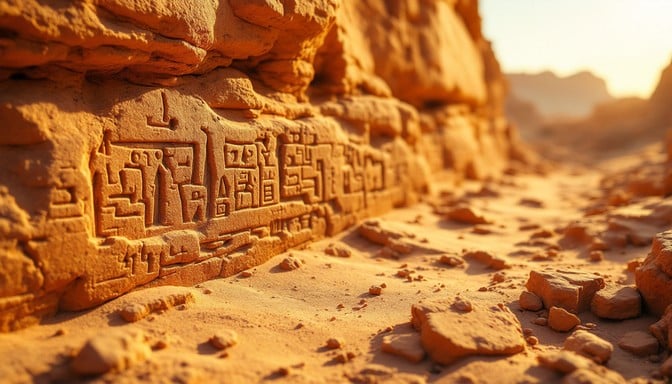 The Bimini Road, also referred to as the Bimini Wall is located nearly half a mile off the west coast of the North Bimini Islands and about half a mile north of Paradise Point in the Bahamas. Coming from the other direction the Bimini Road is around 45 miles east of Miami, Florida’s coast of the Atlantic Ocean. The Bimini Road also lays within the boundaries of the Bermuda Triangle.
The Bimini Road, also referred to as the Bimini Wall is located nearly half a mile off the west coast of the North Bimini Islands and about half a mile north of Paradise Point in the Bahamas. Coming from the other direction the Bimini Road is around 45 miles east of Miami, Florida’s coast of the Atlantic Ocean. The Bimini Road also lays within the boundaries of the Bermuda Triangle.
A mere 20 feet down in the blue waters off the coast, a stone path can be found; large, flat rocks cut at right angles, seemingly set purposefully in straight lines. This impressive formation stretches half a mile along, with a pronounced hook at one end. The stones can measure up to 13 feet (4 metres) across. Researchers, geologists, archaeologists, and scientists alike have visited and studied the huge, flat stones. For years they have all tried to discern whether the limestone blocks are a natural phenomenon, or evidence of an ancient lost civilization.
Different theories on Bimini Road: Anthropogenic versus Natural Origin
As mentioned by Eugene A. Shinn, in The Mystique of Beachrock, since the discovery of Bimini Road the proposition that the stones are man-made and/or “intelligently” placed by ancient cultures has proliferated and attained a life of its own. The anthropogenic-origin hypothesis initiated with Valentine (1969, 1976), Rebikoff (1972, 1979) and followed the suggestion of Cayce (1968), Berlitz (1969, 1984), Zink (1978), related the origin and creation of the Bimini Road structure to the legend of the lost continent of Atlantis. More recently, Menzies (2002) proposed that the stones were placed on the sea floor by ancient Chinese merchantmen who he maintains traveled to the Bahamas before Columbus. The stones were thought to be part of a system for hauling and repairing damaged ships (Menzies 2002).
Although many scientists have examined the Bimini rocks and their peculiar alignment John Gifford conducted the first serious geological study in the 1970s. Relying on keen observation, hand specimens and some core samples, Gifford and Ball (1980) determined that the stones were natural. In a study of supposedly anthropogenic objects from the vicinity Harrison (1971), also concluded the stones and their alignment were natural. Adventurer and book writer Peter Thompkins later initiated and financed a study during which the stones were extensively sampled with a newly developed coring device. A summary of the expedition is provided by Shinn (2004). The core borings proved that the stones are composed of in-situ natural beachrock that has been submerged by a combination of rising Holocene sea level and erosion of underlying sand (Shinn 1978). Coring and examination showed they rest directly on weathered Pleistocene limestone. The Pleistocene limestone is coated by a reddish-brown calcrete, indicating sub-aerial exposure preceding Holocene sedimentation and beachrock formation.
 The Anthropogenic hypotheses states that beaches, and hence beachrock, cannot form such straight lines. In fact, proponents of the hypotheses, however, often point to the area of curved stones at their southern end, called the “inverted J,” as proof of their anthropogenic origin (Little 2006). However, the Natural Origin hypothesis also states that if ancient man constructed Bimini Road, there should be abundant human artifacts at the site. Scoffin (1970) noted glass bottles being incorporated into contemporary beachrock at Bimini, as did Shinn (1978). At this writing, no obvious human artifacts, such as tools, pottery, etc., have been found incorporated within the Bimini Road beachrock or otherwise conclusively linked with formation of the stones.
The Anthropogenic hypotheses states that beaches, and hence beachrock, cannot form such straight lines. In fact, proponents of the hypotheses, however, often point to the area of curved stones at their southern end, called the “inverted J,” as proof of their anthropogenic origin (Little 2006). However, the Natural Origin hypothesis also states that if ancient man constructed Bimini Road, there should be abundant human artifacts at the site. Scoffin (1970) noted glass bottles being incorporated into contemporary beachrock at Bimini, as did Shinn (1978). At this writing, no obvious human artifacts, such as tools, pottery, etc., have been found incorporated within the Bimini Road beachrock or otherwise conclusively linked with formation of the stones.
References
______________________________________________________________________________
- Eugene A. Shinn, The Mystique of Beachrock, http://mgg.rsmas.miami.edu/rnggsa/shinnfinal.pdf
- Eugene A. Shinn, A Geologist’s Adventures with Bimini Beachrock and Atlantis True Believers, https://cdn.centerforinquiry.org/wp-content/uploads/sites/29/2004/01/22164702/p38.pdf





